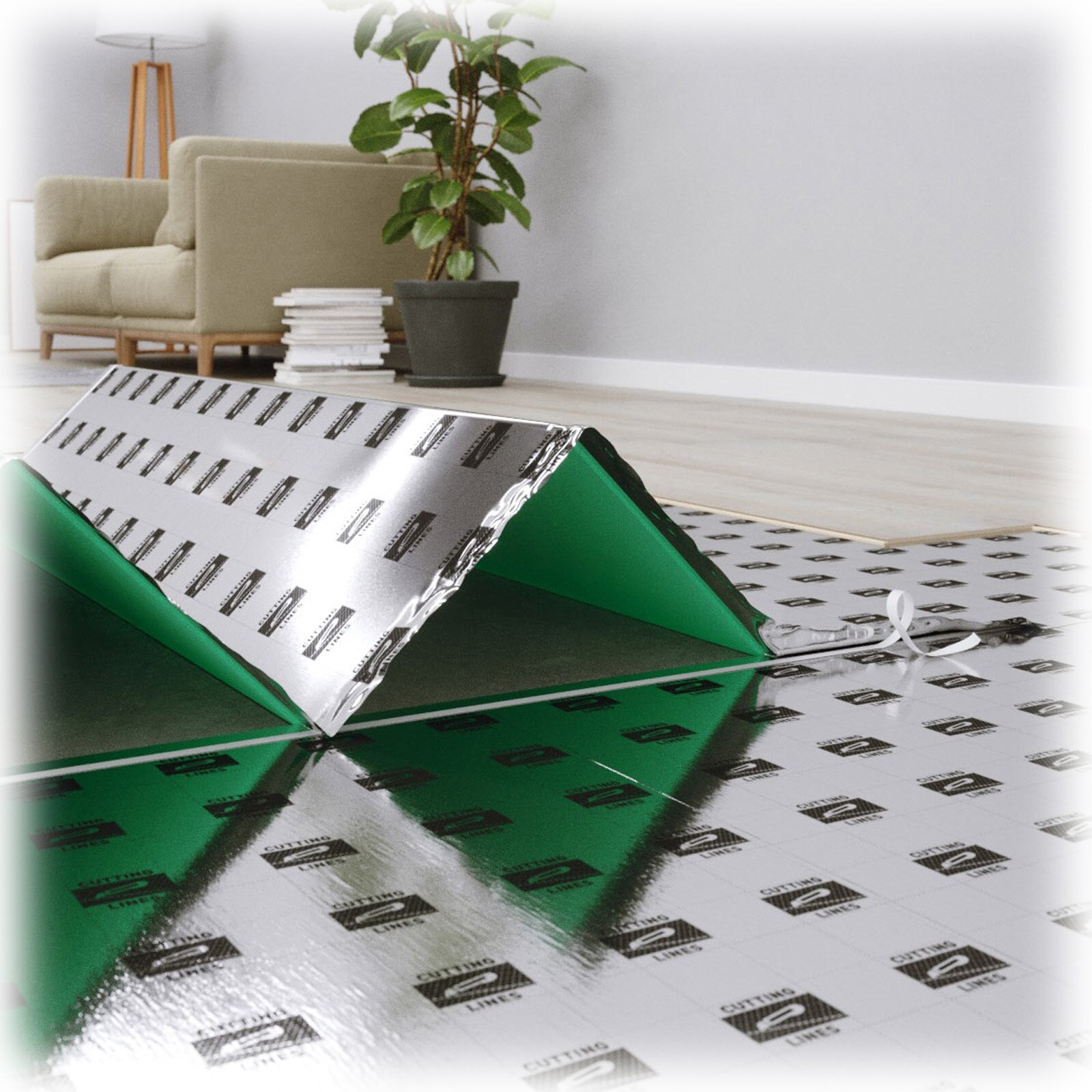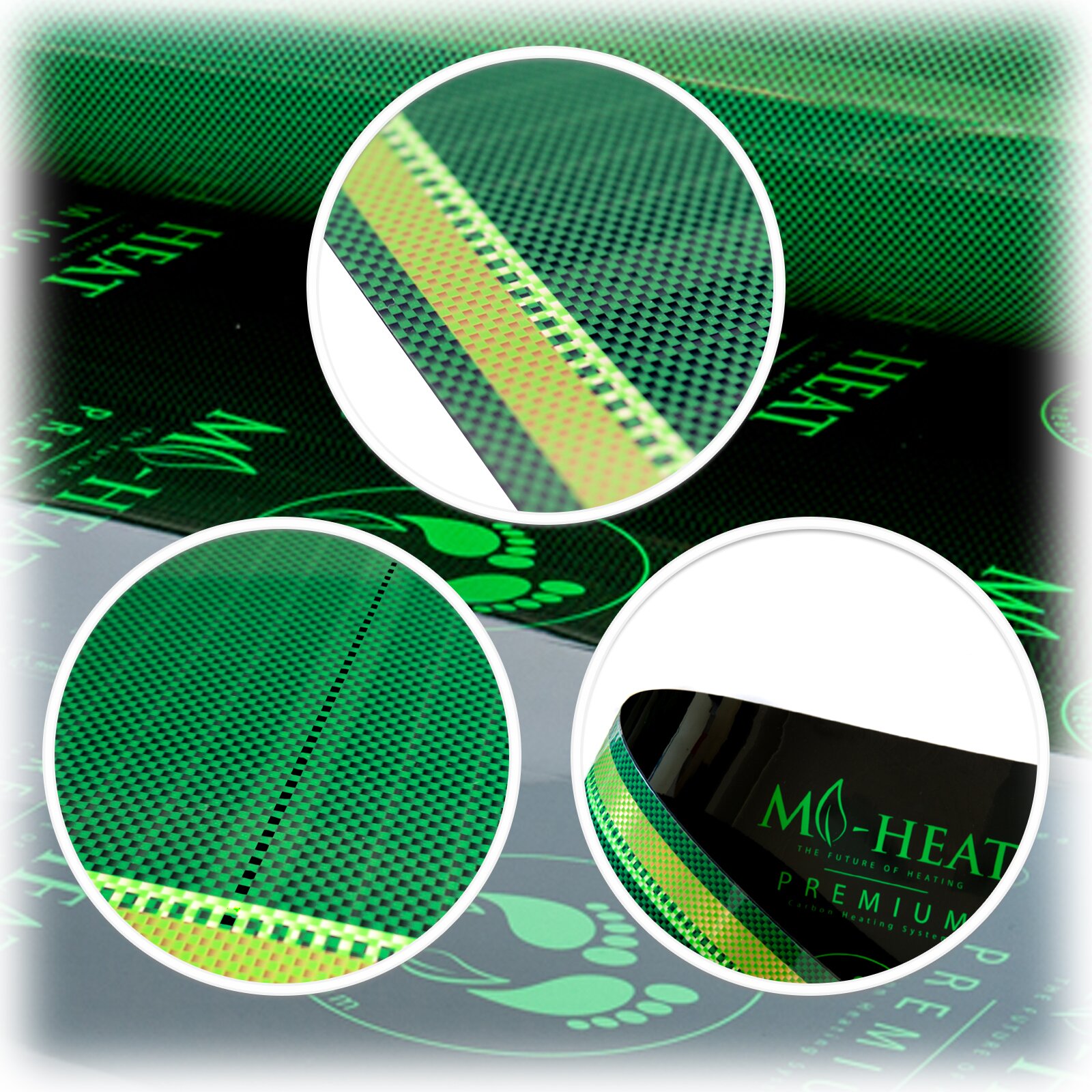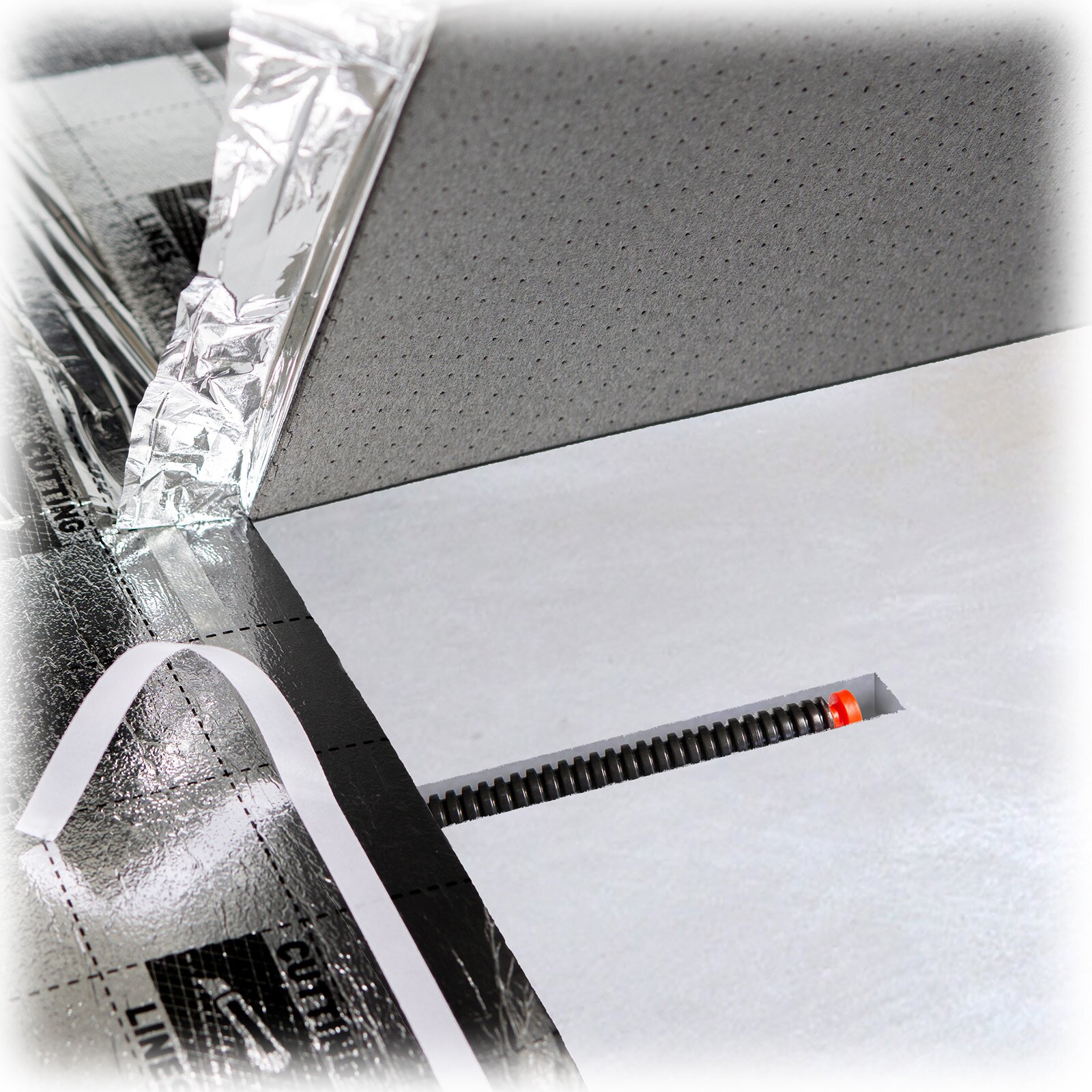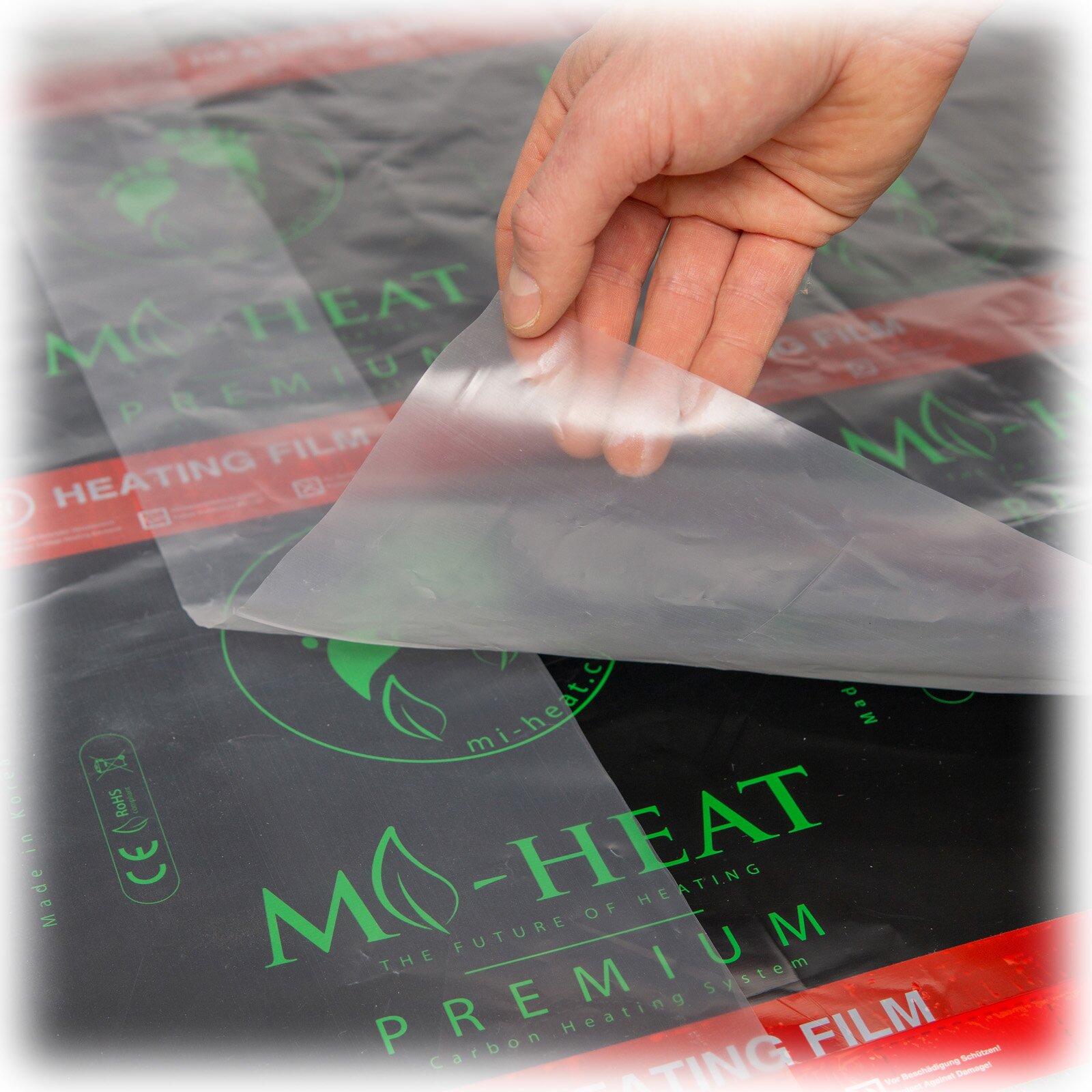Do you still have questions? We will be happy to help you.
(*1) https://www.branchenradar.de/de/studien/bodenbelaege-und-technik/elastische-bodenbelaege-und-laminat-in-deutschland-2021/
Vinyl floors were originally used in commercial buildings, as they are considered very robust and particularly easy to clean. For some years now, however, vinyl floors have also been used in private households. The plastic content makes the design floor elastic, waterproof and warm underfoot. According to a study by www.branchenradar.com, 95.2 million square metres of the elastic floor coverings were sold in Germany alone in 2020. (*1)
Vinyl floors are generally distinguished between so-called solid vinyl floors, vinyl floors with MDF or HDF carrier and hard vinyl (also called rigid vinyl). Solid vinyl floors are made of solid material and have thicknesses between 1.5 mm and 6 mm. Vinyl floors with MDF or HDf carrier (MDF stands for medium density fibreboard and HDF for high density fibreboard) are usually thicker than solid vinyl and have thicknesses between 8 mm and 11 mm. Rigid vinyl is in the middle of the range and usually has thicknesses between 4mm and 8mm. A rigid vinyl floor consists of a multi-layer structure with a stone powder-plastic mixture as the core, also called SPC (Stone-Powder-Composite), which ensures greater dimensional stability, as well as integrated impact sound insulation.


When selecting the floor covering, make sure that it is approved by the manufacturer for use on underfloor heating systems. Since 01 January 2017, the EN12667 and EN12524 standards have imposed a corresponding labelling obligation for the thermal behaviour of building materials and building products.
Unfortunately, some manufacturers are still very conservative in this respect and only approve water-guided underfloor heating systems. The argument is often advanced that electric underfloor heating would generate too much heat. However, this is not the case when choosing the right heating film and using a suitable thermostat with floor sensor. In the future, we would like to see more openness on the part of manufacturers with regard to new technologies.
The thermal resistance results from the thickness of the floor covering and the thermal conductivity of the material. This should be as low as possible and must not exceed 0.15 m²K/W. If the resistance is higher than 0.15 m²K/W, the underfloor heating can no longer heat efficiently and the energy consumption increases. You should therefore consider this value when choosing your floor covering and accessories, such as vapour barrier and impact sound insulation. The suitability is often indicated by a corresponding pictogram.
Tip: In our FAQ section you will find a list of manufacturers who have approved their floor coverings for electric underfloor heating. This overview is also continuously updated by us.
FAQ: Which floor coverings are suitable for electric underfloor heating?
The structure of an electric underfloor heating system under floating vinyl flooring usually consists of 4 components.
• Vinyl flooring
• Vapour barrier (PE foil)
• Heating film
• Impact sound insulation (heating film underlay)
Let's start from the bottom up:


First, a thin layer of impact sound insulation is laid on the existing subfloor. This compensates for slight unevenness and reduces noise when walking on the floor covering. For use with electric underfloor heating, there are special impact sound insulations, often also called heating film underlays, which have a high thermal resistance and an aluminium-vapourised top surface. This is because, unlike impact sound insulation for water-guided underfloor heating systems, which is installed above the heating system, the heat generated should not penetrate through the underlay. The aluminium vapourised top surface also acts as a reflector so that most of the heat energy is radiated upwards towards the floor covering.
Another positive property of our aluminium-vapourised heating film underlay is its function as a vapour barrier. This is because mineral substrates, such as screed or concrete, consist partly of water and therefore rising damp can occur under certain climatic conditions. The coating prevents this water vapour from condensing on the heating films or the floor covering and causing possible damage. For optimum tightness, the heating film underlay has an overlapping adhesive edge that securely seals the butt joints. Optionally, an Aluminium/PET joint sealing tape can also be used for sealing.
However, the decisive factor for the correct material thickness of the heating film underlay is then the planned vinyl floor. Vinyl floors made of solid material are usually only a few millimetres thick and therefore have less dimensional stability. For this reason, only a 1.5 mm thick heating film underlay may be laid under the floor covering. With thicker underlays (impact sound insulation), there is otherwise a risk of the seams opening up or even breaking out.
The situation is different with vinyl floors with an HDF carrier, as these are much more dimensionally stable. Here, underlays with a thickness of 3 mm or 5 mm can be selected, which, in addition to better insulation, also offer the advantage that the connection cables of the heating films can be accommodated here. With the thinner 1.5 mm heating film underlays, it is necessary to mill out the substrate somewhat and cut into the underlay to accommodate the cables.
For Rigid Vinyl with integrated impact sound insulation, a 1.5 mm thick heating film underlay can usually also be used. A compressive strength of about 400 kPa should be ensured for the entire structure to prevent pressure damage. It is best to check the data sheet of the floor covering.
The selection of the right heating film depends on various factors:
• Main heating / additional heating
• Insulation of the building
• Available space
The floor coverings are often approved by the manufacturers for heating systems with a maximum temperature of 27 to 28°C. Based on these values, we recommend a heating capacity of about 100 W/m² for vinyl floors. Higher heat outputs could actually supply too much heat energy in too short a time. (*2) There would then be a risk of the seams of the floor covering opening up, the floor becoming wavy or discolouration of the material.
In modern buildings with good insulation, however, 60 W/m² or 80 W/m² of heating films can be sufficient to generate enough heat. In this case, it depends on the available free space on the floor. For electric underfloor heating to be used as sole heating, about 70-80 % of the respective room must be equipped with heating film. (*3) Fixed objects that rest completely on the floor should therefore be left out of the planning. If, on the other hand, the electric floor heating is only to be used to control the temperature of the floor, smaller areas will suffice.
(*2 / *3) These are guideline values for which there may, of course, be exceptions. This depends, among other things, on the materials used and the structural conditions (e.g. basement).
It is very important to use a suitable thermostat with floor sensor in every room that is to be equipped with electric floor heating. The thermostat provides thermal monitoring and ensures that the maximum permissible floor temperature of 27 °C is not exceeded. Often, this setting must first be activated in the units. Therefore, always take a look at the manual supplied first. The floor sensor should always be installed in an empty pipe below the heating film underlay so that it can be easily replaced in case of a defect. It is a good idea to lay two corrugated pipes at the same time. One for the floor sensor and the other for the connection cables of the heating films. If all cables are pulled through only one corrugated pipe, the defective floor sensor can be pulled out, but the new sensor usually cannot be pushed through to the end. In order not to falsify the temperature measurement, it is advisable to cut out an approx. 2 cm x 2 cm piece from the heating film underlay above the end of the empty pipe.



A thin PE film (also known as AquaStop film) should then be laid over the heating films. This fulfils two important functions:
a.) A floor that is mopped too damp or a mop bucket that has been tipped over will introduce any amount of moisture into the floor. The PE film prevents moisture from penetrating towards the heating foils as well as the materials underneath and thus protects them.
b.) Since the floor covering is usually laid as a floating floor, tiny movements are generated as soon as people walk on it. These smallest movements create mechanical friction on the material underneath. With the PE foil as an additional layer, the friction generated is not directly transferred to the heating foil and protects it.
Ideally, the film should be laid like a trough, with the cut edges overlapping by at least 10 cm. The cut edges should then be taped with a suitable, temperature-resistant adhesive tape (e.g. Mi-Heat OPP-Tape).
As you can see, you can create a comfortable heating solution with comparatively little effort. Electric underfloor heating based on a heating film is equally suitable for new buildings or renovations of existing buildings.
You can find the right products for your project directly in our online shop.

Do you still have questions? We will be happy to help you.
(*1) https://www.branchenradar.de/de/studien/bodenbelaege-und-technik/elastische-bodenbelaege-und-laminat-in-deutschland-2021/